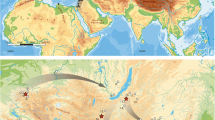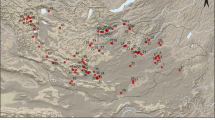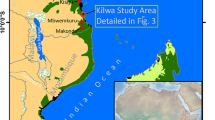Abstract
This paper examines how microblade technology emerged in North China based on the case study of the newly excavated Xishi and Dongshi sites in the hinterland of North China. Used as the lithic production area, Xishi and Dongshi sites generated abundant lithic debris which show the presence of a precocious form of microblade techno-complex embedded within the blade techno-complex. Radiocarbon dating suggests that they are among the earliest microblade sites ever found in North China. A chaîne opératoire approach is used to analyze the lithic assemblage of these two sites to investigate the specific features of the precocious form of microblade technology and its correlations to blade technology. The results indicate that the precocious microblade assemblage shows close technical affinity with the blade assemblage but is different from blade technology due to the frequent appliance of the pressure method to produce smaller end products from more diminutive cores. It indicates that the emergence of microblade technology in North China was a local technological innovation based upon blade technology which diffused from Siberia-Mongolia. Its appearance reflects a culturally meditated technological adaptation to cope with environmental change during LGM (Last Glacial Maximum) period.












Similar content being viewed by others
References
Ambrose SH (2002) Small things remembered: origins of early microlithic industries in sub-Saharan Africa. In: Elston RG, Kuhn SL (eds) Thinking small: global perspectives on Microlithization. Arlington, Virginia, American Anthropological Association
An Z (1978) Mesolithic remains at Hailar- with notes on the origin of the microlithic tradition (in Chinese). Kaogu Xuebao:289–316
Bae K (2010) Origin and patterns of the Upper Paleolithic industries in the Korean Peninsula and movement of modern humans in East Asia. 211. 103–112
Buvit I, Terry K, Izuho M, Konstantinov MV, Konstantinov AV (2015) Last glacial maximum human occupation of the Transbaikal, Siberia. PaleoAmerica 1:374–376
Buvit I, Izuho M, Terry K, Konstantinov MV, Konstantinov AV (2016) Radiocarbon dates, microblades and Late Pleistocene human migrations in the Transbaikal, Russia and the Paleo-Sakhalin-Hokkaido-Kuril peninsula. Quat Int 425:100–119
Chen C (2007) Techno-typological comparison of microblade cores from East Aisa and North America. In: Kuzmin YV, Keates SG, Shen C (eds) Origin and spread of microblade Technology in Northern Asia and North America. SFU Archaeology Press, Burnaby (BC)
Chen S (2008) The origin of microblade technique- a theoretical and ecological perspective (in Chinese). A Collection of Studies on Archaeology:244–264
Chen S, Ye C (2019) Theoretical retrospection on the origin of microblade technology (in Chinese). Acta Anthropologica Sinica 38:751–766
Chen C, Zhang M (2018) Retrospect and rethinking on the microblade industries (in Chinese). Acta Anthropologica Sinica 37:577–589
Collins MB, Kay M (1999) Clovis blade technology: a comparative study of the Keven Davis Cache, Texas, Austin, Texas, University of Texas Press
Derevianko AP (2005) The middle to upper Paleolithic transition in the Altai (Mongolia and Siberia). In: Derevianko, A. P. (ed.) The middle to upper Paleolithic transition in Eurasia: hypotheses and facts. Novosibirsk: Institute of Archaeology and Ethnography Press
Derevianko AP, Shunkov MV (2005) Formation of the upper Paleolithic traditions in the Altai. Archaeol Ethnol Anthropol Eurasia 3:12–40
Derevianko AP, Powers WR, Shimkin DB (1998) The Paleolithic of Siberia: new discoveries and interpretations (I.P. Larichva, Trans.), Novosibirsk, Institute of Archaeology and Ethnography, Siberian Division, Russian Academy of Sciences
Du S (2021) Continuity and break: rethinking the significance of Xiachuan site in Chinese Paelolithic research (in Chinese). Quaternary Sciences 41:153–163
Du S, Wang J, Wang Y, Shan Y (2019). The excavation of the Xiaobaihuageliang locality of Xiachuan site in Qingshui Shanxi in 2015 (in Chinese). Acta Anthropologica Sinica, 383–408
Elston RG (2002) Toward understanding the spatial and temporal distribution of mircoblithic technology in Northeast Asia and Eastern Beringia In: Madsen, D. B. (ed.) Entering America: Northeast Asia and Beringia before the Last Glacial Maximum Salt Lake City: University of Utah Press
Elston RG, Brantingham PJ (2002) Microlithic technology in northern Asia: a risk-minimizing strategy of the late Paleolithic and early Holocene. In: Elston RG, Kuhn SL (eds) Thinking small: global perspectives on Microlithization. Arlington, Virginia, Archaeological Papers of the American Anthropological Association
Gao X (2011) A preliminary study of lithic assemblage of the Xishi site (in Chinese). Peking University, MA
Gao X, Pei S (2006) An archaeological interpretation of ancient human lithic technology and adaptive strategies in China (in Chinese). Quanternary Sciences 26:504–513
Gladyshev SA, Olsen JW, Tabarev AV, Jull AJT (2012) The upper Paleolithic of Mongolia: recent finds and new perspectives. Quat Int 281:36–46
Goebel T (1999) Pleistocene human colonization of Siberia and peopling of the Americas: an ecological approach. Evolutionary Anthropology: Issues, News, and Reviews 8:208–227
Goebel T (2002) The “microblade adaptation” and recolonization of Siberia during the Late Upper Pleistocene. In: Elston RG, Kuhn SL (eds) Thinking small: global perspectives on Microlithization. Arlingtong, Virginia, Archaeological Papers of the American Anthropological Association
Gómez Coutouly YA (2018) The emergence of pressure knapping microblade technology in Northeast Asia. Radiocarbon 60:821–855
Graf KE (2008) Uncharted territory: Late Pleistocene hunter-gatherer dispersals in the Siberian mammoth-steppe. Doctoral, University of Nevada, Reno
Graf KE (2009) Modern human colonization of the Siberian mammoth steppe: a view from south-Central Siberia. In: Camps M, Chauhan P (eds) Sourcebook of Paleolithic transitions. Springer, New York
Graf KE (2010) Hunter–gatherer dispersals in the mammoth-steppe: technological provisioning and land-use in the Enisei River valley, south-Central Siberia. J Archaeol Sci 37:210–223
Guan Y, Wang X, Wang F, Olsen JW, Pei S, Zhou Z, Gao X (2020) Microblade remains from the Xishahe site, North China and their implications for the origin of microblade technology in Northeast Asia. Quat Int 535:38–47
Hao Q, Wang L, Oldfield F, Peng S, Qin L, Song Y, Xu B, Qiao Y, Bloemendal J, Guo Z (2012) Delayed build-up of Arctic ice sheets during 400,000-year minima in insolation variability. Nature (London) 490:393–396
Inizan M-L, Reduron-Ballinger M, Roche H (1999) Prehistory and terminology of knapped stone (translated by Alan Lee). Meudon, CREP
Ji D, Chen F, Bettinger RI, Elston R, Geng Z, Barton LM, Wang H, An C, Zhang D (2005) Human response to the last glacial maximum: evidence from North China (in Chinese). Acta Anthropologica Sinica:270–282
Jia L (1978) The characteristics of the microblades in China and its tradition, origin and distribution (in Chinese). Gujizhuidongwu yu Gurenlei:137–143
Jin C, Xu Q, Zheng J (1998) On the dispersal events of Mammuthus during the Late Pleistocene (in Chinese). Guijizhui Dongwu Xuebao:3–5
Kato S (2006) The blade technique of China (in Chinese). Acta Anthropologica Sinica 25:343–351
Kato S (2014) Human dispersal and interaction during the spread of microblade industries in East Asia. Quat Int 347:105–112
Kato S (2015) On the discovery of microlithic industry in North China (in Chinese). Huaxia Kaogu:56–67
Kaufman D (1986) A proposed method for distinguishing between blades and bladelets. Lithic Technol 15:34–40
Keates SG (2007) Microblade technology in Siberia and neighbouring regions: an overview. In: Kuzmin, Y. V., Keates, S. G. & Chen, C. (eds.) Origin and spread of microblade Technology in Northern Asia and North America. SFU Archaeology Press
Keates SG, Postnov AV, Kuzmin YV (2019) Towards the origin of microblade technology in northeastern Asia. Vestnik of Saint Petersburgh University, History 64:390–414
Kuzmin YV (2007) Geoarchaeological aspects of the origin and spread of microblade technology in northern and Central Asia. In: Kuzmin, Y. V., Keates, S. G. & Shen, C. (eds.) Origin and spread of microblade Technology in Northern Asia and North America. Burnaby (BC): SFU Archaeology Press
Li Y (2016). Microlithic: the concepts and its research method (in Chinese). Northern Cultural Relics, 19–22
Li Y (2018) The origin and development of the blade technology in the north of China——the Xishi site and related research in Dengfeng, Henan (in Chinese). Doctoral, Peking University
Li W (2020) MIS 3 flake tool industries along the Eastern Piedmont of Songshan Mountain and Northern China (in Chinese). Doctoral, Peking University
Liu T (2020) A Comprehensive study of the lithic raw materials of Late Pleistocene in China (in Chinese). Doctoral, Peking University
Liu W, Li Y, Yang S (2019) The trial excavation of the Xishantou site of the Paleolithic age in Longjiang County, Heilongjiang Province (in Chinese). Kaogu 11:3–13
Nian X, Gao X, Xie F, Mei H, Zhou L (2014) Chronology of the Youfang site and its implications for the emergence of microblade technology in North China. Quat Int 347:113–121
Lombard M, Parsons I (2008) Blade and bladelet function and variability in risk management during the last 2000 years in the northern cape. South African Archaeological Bulletin 63:18–27
Pelegrin J (2012) New experimental observations for the characterization of pressure blade production techniques. In: Desrosiers PM (ed) The emergence of pressure blade making: from origin to modern experimentation. Boston, MA, Springer US
Rybin EP, Khatsenovich AM, Gunchinsuren B, Olsen JW, Zwyns N (2016) The impact of the LGM on the development of the upper Paleolithic in Mongolia. Quat Int 425:69–87
Song Y, Cohen DJ, Shi J, Wu X, Kvavadze E, Goldberg P, Zhang S, Zhang Y, Bar-Yosef O (2017) Environmental reconstruction and dating of Shizitan 29, Shanxi Province: an early microblade site in North China. J Archaeol Sci 79:19–35
Terry K, Buvit I, Konstantinov MV (2016) Emergence of a microlithic complex in the Transbaikal region of southern Siberia. Quat Int 425:88–99
Vasil'ev SA (1993) The upper Palaeolithic of northern Asia. Curr Anthropol 34:82–92
Wang X, Zhang J 2016. Processing technology and the chronology of the microlith in the Longwangchan Loc. 1 - an extended discussion on the origin of Mirolith in North China (in Chinese). Nanfang Wenwu, 49–56
Wang YJ, Cheng H, Edwards RL, An ZS, Wu JY, Shen CC, Dorale JA (2001) A high-resolution absolute-dated Late Pleistocene monsoon record from Hulu cave, China. Science 294:2345–2348
Wang Y, Wang S, Zhao C, Chen Y (2018) The excavation of the upper Paleolithic Dongshi site at Dengfeng, Henan in 2013 (in Cinese). Zhongyuan Wenwu:46–53
Winkler MG, Wang PK (1993) The Late-Quaternary vegetation and climate of China. In: Wright, H. E., E., K. J., Webb, T., Ruddiman, W. F., Street-Perrot, F. A. & Bartilein, P. J. (eds.) Global Climate since the Last Glacial Maximum. Minneapolis: University of Minnesota Press
Yi, M. 2019. The microblade technology and early progress of social organizational complexity in Northern China (in Chinese). Kaogu, 70–78
Yi M, Barton L, Morgan C, Liu D, Chen F, Zhang Y, Pei S, Guan Y, Wang H, Gao X, Bettinger RL (2013) Microblade technology and the rise of serial specialists in north-Central China. J Anthropol Archaeol 32:212–223
Yi M, Gao X, Li F, Chen F (2016) Rethinking the origin of microblade technology: a chronological and ecological perspective. Quat Int 400:130–139
Yue JP, Yang SX, Li YQ, Storozum M, Petraglia MDJPPP (2021) Human adaptations during Mis 2: evidence from microblade industries of Northeast China. Palaeogeogr Palaeoclimatol Palaeoecol 567:110286
Zhang D, Chen F, Ji D, Barton L, Brantingham PJ, Wang H (2011) The age, lithics and paleoenvironmental study of the Sumiaoyuantou locality, Gansu Province (in Chinese). Acta Anthropologica Sinica 30:289–298
Zhao C (2015) Lithic analysis of the Dongshi site (in Chinese). Peking University, MA
Zhu Z (2008) A view on the origin of microlith in China (in Chinese). Beifang Wenwu:3–6
Funding
This work was supported by the grant from Research Academy of Songshan Civilization in Zhengzhou (no.DZ-7), the China National Philosophy and Social Science Foundation (no. 11&ZD 120), and the research project “The Roots of Chinese civilization” led by Zhengzhou University (XKZDJC202006). John Walden has helped to revise the manuscript.
Author information
Authors and Affiliations
Corresponding authors
Additional information
Publisher’s note
Springer Nature remains neutral with regard to jurisdictional claims in published maps and institutional affiliations.
Rights and permissions
About this article
Cite this article
Zhao, C., Wang, Y., Gu, W. et al. The emergence of early microblade technology in the hinterland of North China: a case study based on the Xishi and Dongshi site in Henan Province. Archaeol Anthropol Sci 13, 98 (2021). https://doi.org/10.1007/s12520-021-01338-9
Received:
Accepted:
Published:
DOI: https://doi.org/10.1007/s12520-021-01338-9




